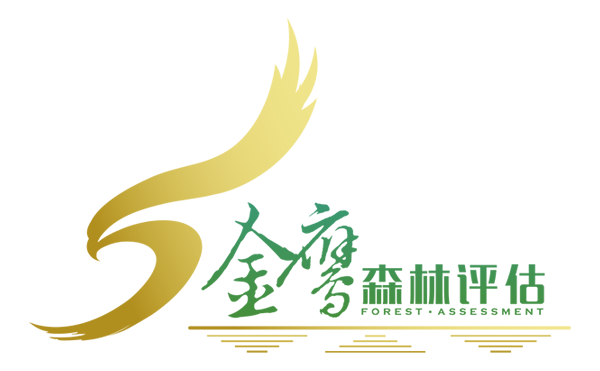發(fā)布:2025-11-20 瀏覽:0
、 自然資源資產(chǎn)核算體系建設(shè)是自然資源資產(chǎn)產(chǎn)權(quán)制度和管理制度的基礎(chǔ)工作,解決的是“有多少、值多少”的家底盤點問題。深圳市聚焦存在的問題,探索構(gòu)建一套貨幣化與非貨幣化相結(jié)合、分類與整體相結(jié)合、定量與定性相結(jié)合的自然資源資產(chǎn)評估核算體系。核算體系覆蓋土地、森林、濕地、礦產(chǎn)、水、草地和海洋7類自然資源資產(chǎn),包括經(jīng)濟價值核算、生態(tài)價值核算、社會價值核算三大核算系統(tǒng),為自然資源資產(chǎn)價值實現(xiàn)夯實了基礎(chǔ)。
The construction of a natural resource asset accounting system is the fundamental work of the property rights system and management system of natural resource assets, which solves the problem of inventory of "how much is there and how much is it worth". Shenzhen focuses on the existing problems and explores the construction of a natural resource asset evaluation and accounting system that combines monetization and non monetization, classification and overall, and quantitative and qualitative methods. The accounting system covers seven types of natural resource assets: land, forests, wetlands, minerals, water, grasslands, and oceans. It includes three major accounting systems: economic value accounting, ecological value accounting, and social value accounting, laying a solid foundation for realizing the value of natural resource assets.
1經(jīng)濟價值核算空間資源資產(chǎn)價值核算空間資源資產(chǎn)包括土地資源資產(chǎn)和海洋資源資產(chǎn)。其中,土地資源資產(chǎn)價值核算對象包括農(nóng)用地、建設(shè)用地、儲備土地、林地和濕地;海洋資源資產(chǎn)價值核算包括海域和無居民海島。農(nóng)用地經(jīng)濟價值采用基準地價成果進行核算,涉及國有耕地、國有園地、國有坑塘水面,能夠覆蓋農(nóng)用地核算對象。具體方式是將農(nóng)用地圖層與相應(yīng)的基準地價圖層疊加,并充分考慮面積最大原則、臨近原則,核算出農(nóng)用地價值。建設(shè)用地價值核算主要是應(yīng)用標定地價成果,首先將標定地價轉(zhuǎn)換為宗地價格,再通過修正系數(shù)轉(zhuǎn)換為具有個別特征的待估算地塊的清查價格。圖1 標定地價核算土地資產(chǎn)價格核算流程深圳市儲備土地受形成時間早、征收主體多元等因素影響,具有成本數(shù)據(jù)收集困難、規(guī)劃用途種類繁多等特點。因此,深圳市在核算儲備土地時,暫時只核算規(guī)劃用途為建設(shè)用地部分的經(jīng)濟價值,核算方法與建設(shè)用地價值核算一致。儲備土地成本核算則是考慮儲備土地從收儲到出讓全流程所產(chǎn)生的成本,重點將土地整備成本和管理成本作為成本核算數(shù)據(jù)基礎(chǔ),形成全市統(tǒng)一的單位面積成本價格。森林資源中的林地經(jīng)濟價值核算、濕地資源中紅樹林地經(jīng)濟價值核算的方法與農(nóng)用地一致。草地資源經(jīng)濟價值按照“三區(qū)三線”規(guī)劃分為三部分,其中,城鎮(zhèn)開發(fā)邊界范圍內(nèi)草地資源按照工業(yè)用地核算,生態(tài)紅線范圍內(nèi)草地資源按照林地核算,其余草地資源則按照耕地核算。海洋資源經(jīng)濟價值只核算經(jīng)營性且已取得海域使用權(quán)的海域,海洋保護區(qū)、保留區(qū)以外尚未取得海域使用權(quán)的已填成陸區(qū)域和尚未取得海域使用權(quán)的未填成陸海域,以及經(jīng)營性已取得無居民海島使用權(quán)海島和尚未確權(quán)的可開發(fā)利用無居民海島資源資產(chǎn)經(jīng)濟價值。對于公益性用海用島、特殊用海用島、海洋保護區(qū)、保留區(qū)及未確權(quán)未納入可開發(fā)利用的無居民海島資源資產(chǎn)暫時只清查實物量,未核算經(jīng)濟價值。物質(zhì)資源資產(chǎn)經(jīng)濟價值核算森林資源物質(zhì)資產(chǎn)包括林木、林果和古樹名木。目前林木資源資產(chǎn)核算經(jīng)過多年的市場驗證已經(jīng)形成了一套較為完善的核算方法。深圳市根據(jù)林種、林齡、樹種等因素選取不同的經(jīng)濟價值估算方法,其中,對幼齡林的林木資產(chǎn)采用重置成本法,對中齡林和近熟林的林木資產(chǎn)采用收獲現(xiàn)值法,對成熟林、過熟林采用市場價倒算法,對竹林、果林的林木資產(chǎn)采用年均收益現(xiàn)值法。根據(jù)深圳市地方標準《陸域自然資源資產(chǎn)核算技術(shù)規(guī)范》,林果產(chǎn)品采用年均收益現(xiàn)值法。古樹名木的價值核算以深圳市古樹名木普查數(shù)據(jù)為基礎(chǔ),核算每棵古樹名木的貨幣化價值,并運用深圳實際案例進行校正,分區(qū)域、分類型、分管理主體對古樹名木經(jīng)濟價值進行統(tǒng)計分析。水資源資產(chǎn)經(jīng)濟價值只核算水體的經(jīng)濟價值,水體對應(yīng)的陸地則在空間資源中核算。在統(tǒng)計水資源量時,水資源可分為地表水和地下水,并根據(jù)相應(yīng)的水價進行核算。由于深圳市礦產(chǎn)資源已經(jīng)全面停止開發(fā),無法獲取礦業(yè)權(quán)經(jīng)營測算基礎(chǔ)數(shù)據(jù)和技術(shù)資料,不滿足凈現(xiàn)值法的測算要求,因此,深圳市主要采用礦業(yè)權(quán)出讓市場基準價修正法,再根據(jù)可采儲量計算出相關(guān)礦產(chǎn)的資產(chǎn)價值。
1. Economic value accounting: Spatial resource asset value accounting: Spatial resource assets include land resource assets and marine resource assets. Among them, the accounting objects of land resource asset value include agricultural land, construction land, reserve land, forest land, and wetlands; The valuation of marine resource assets includes sea areas and uninhabited islands. The economic value of agricultural land is calculated using benchmark land price results, involving state-owned cultivated land, state-owned gardens, and state-owned ponds and ponds, which can cover the accounting objects of agricultural land. The specific method is to overlay the agricultural map layer with the corresponding benchmark land price layer, and fully consider the principles of maximum area and proximity to calculate the value of agricultural land. The value accounting of construction land mainly applies the results of calibrated land prices. Firstly, the calibrated land price is converted into the price of the land parcel, and then converted into the inventory price of the estimated land parcel with individual characteristics through a correction coefficient. Figure 1 Calibration of Land Price Accounting Process for Land Asset Price Accounting Shenzhen's reserve land is affected by factors such as early formation time and multiple expropriation entities, making it difficult to collect cost data and having a wide variety of planned uses. Therefore, when calculating the reserve land in Shenzhen, only the economic value of the planned use as construction land is temporarily accounted for, and the accounting method is consistent with the value accounting of construction land. The cost accounting of reserved land considers the costs incurred throughout the entire process of land acquisition and transfer, with a focus on land preparation and management costs as the basis for cost accounting data, forming a unified unit area cost price for the whole city. The methods for calculating the economic value of forest land in forest resources and mangrove forest land in wetland resources are consistent with those for agricultural land. The economic value of grassland resources is divided into three parts according to the "Three Zones and Three Lines" plan. Among them, grassland resources within the urban development boundary are accounted for as industrial land, grassland resources within the ecological red line are accounted for as forest land, and the remaining grassland resources are accounted for as cultivated land. The economic value of marine resources only accounts for the economic value of operational and acquired sea areas, land filled areas outside marine protected areas and reserves that have not yet obtained sea area use rights, and land filled sea areas that have not yet obtained sea area use rights, as well as operational islands that have obtained uninhabited island use rights and the economic value of exploitable uninhabited island resource assets that have not yet been confirmed. For public welfare sea islands, special sea islands, marine protected areas, reserved areas, and uninhabited island resource assets that have not been confirmed and included in the exploitable use, only the physical quantity is temporarily checked, and the economic value is not accounted for. The economic value accounting of material resource assets includes forest trees, fruits, and ancient and famous trees. At present, the accounting of forest resource assets has formed a relatively complete set of accounting methods after years of market verification. Shenzhen city selects different economic value estimation methods based on factors such as forest species, forest age, and tree species. Among them, the reset cost method is used for the forest assets of young forests, the present value of harvest method is used for the forest assets of middle-aged and nearly mature forests, the market value inversion algorithm is used for mature and over mature forests, and the annual average present value method is used for the forest assets of bamboo forests and fruit forests. According to the local standard "Technical Specification for Land Natural Resource Asset Accounting" in Shenzhen, the annual average present value method is used for forest and fruit products. The value accounting of ancient and famous trees is based on the census data of ancient and famous trees in Shenzhen. The monetary value of each ancient and famous tree is calculated and corrected using actual cases in Shenzhen. The economic value of ancient and famous trees is statistically analyzed by region, type, and management entity. The economic value of water resources assets only accounts for the economic value of water bodies, while the land corresponding to water bodies is accounted for in spatial resources. When calculating the amount of water resources, they can be divided into surface water and groundwater, and calculated based on the corresponding water prices. Due to the complete cessation of mineral resources development in Shenzhen, it is impossible to obtain basic data and technical information for mining rights operation calculation, which does not meet the calculation requirements of the net present value method. Therefore, Shenzhen mainly adopts the mining rights transfer market benchmark price correction method, and calculates the asset value of relevant minerals based on recoverable reserves.
2生態(tài)價值核算主要生態(tài)價值核算方法分析目前,生態(tài)價值核算方法主要當量因子法、功能價值法和能值法。(1)當量因子法:核心是通過以往研究和專家評估的方法確定單位面積生態(tài)價值,然后再根據(jù)總面積核算區(qū)域生態(tài)價值,其優(yōu)點是操作簡單,缺點是精度較低。(2)功能價值法:核心是通過實驗或模型計算生態(tài)系統(tǒng)功能實物量,再通過替代工程法等方法核算其價值量,優(yōu)點在于核算精度高,缺點在于參數(shù)復(fù)雜,技術(shù)壁壘高,價值類型單一,難以指導(dǎo)自然資源管理。(3)能值法:從輸入生態(tài)系統(tǒng)的各種能量的角度(供給者角度)出發(fā)對生態(tài)系統(tǒng)服務(wù)進行評估,該方法考慮到不同形式的能源、材料、人類勞動和經(jīng)濟服務(wù),為探索環(huán)境與經(jīng)濟的可持續(xù)互動提供更大的潛力,但目前該方法主要運用于科研領(lǐng)域,實際管理中運用較少。總體來看,當前自然資源資產(chǎn)生態(tài)價值核算尚無統(tǒng)一的評估核算體系和標準。同時,生態(tài)價值的市場屬性還沒有完全顯化,大部分生態(tài)系統(tǒng)服務(wù),比如水源涵養(yǎng)、調(diào)節(jié)氣候等,都是“無形”的,既沒有交易市場,也沒有交易價格。為了使生態(tài)價值核算能夠反映長期變化趨勢,注重綜合生態(tài)效益,并兼顧反映多種價值類型和易操作、可復(fù)制、可推廣等特點,深圳市以生態(tài)系統(tǒng)質(zhì)量作為評價目標,提出基于“自然基點”的生態(tài)價值核算體系。該核算體系主要采用自然資源日常管理數(shù)據(jù),以及無量綱的核算結(jié)果和多樣化的貨幣化方法,不僅大大降低了數(shù)據(jù)采集成本,而且能夠適用于多樣化的自然資源管理場景。基于“自然基點”的生態(tài)價值核算方法一是劃分自然分區(qū)。在借鑒黃秉維院士主持的“中國綜合自然區(qū)劃”和鄭度院士主持的“中國生態(tài)地理區(qū)域劃分”項目成果的基礎(chǔ)上,綜合考慮氣候、地質(zhì)、地貌、植被類型、土壤類型等因素,在全國尺度上劃分自然分區(qū),使得分區(qū)內(nèi)部一致性和外部差異性最大化。二是自然基點參數(shù)選取。對每類資源選取最關(guān)鍵、最具代表性的核算指標,用以整體反映該類資源的核心生態(tài)功能,其中森林資源生態(tài)價值核算參數(shù)選取應(yīng)符合《森林生態(tài)系統(tǒng)服務(wù)功能評估規(guī)范》(GB/T 38582—2020)的規(guī)定,濕地生態(tài)價值核算參數(shù)選取應(yīng)符合《濕地生態(tài)系統(tǒng)服務(wù)評估規(guī)范》(LY/T 2899—2017)的規(guī)定。三是自然基點參數(shù)標準化。連續(xù)性定量參數(shù)采用極差標準化方法將自然屬性參數(shù)值標準化至[0,100],非連續(xù)性定量參數(shù)和定性參數(shù)主要采用專家打分法標準化至[0,100]。四是自然基點參數(shù)權(quán)重確定。采用專家打分法確定參數(shù)權(quán)重,并應(yīng)用敏感性因子分析法對權(quán)重進行驗證。五是自然基點計算。通過對比核算對象在本資源內(nèi)部生態(tài)質(zhì)量的相對優(yōu)劣,將標準化的參數(shù)通過加權(quán)求和,得到一級自然基點,實現(xiàn)資源內(nèi)部生態(tài)價值可比,再通過綜合修正計算得到二級自然基點,實現(xiàn)不同資源間生態(tài)價值可比。六是自然基點的貨幣化。一級自然基點和二級自然基點均可貨幣化,基于核算目標設(shè)置標準樣地的精度和數(shù)量,選取具有代表性的標準樣地并核算其貨幣化價值,進而推算修正其他任意地塊的貨幣化價值。根據(jù)自然資源管理實際與應(yīng)用場景不同,采用差異化的具體貨幣化方法,如自然資源資產(chǎn)損害賠償可以考慮采用重置成本法,生態(tài)修復(fù)成效評估可考慮采用功能價格法。圖2 基于“自然基點”的生態(tài)價值核算體系生態(tài)價值整體核算方法針對相對獨立的生態(tài)系統(tǒng)或具有明確邊界的管理單元(如國家公園),重點考慮其自然稟賦條件、區(qū)域發(fā)展和市場需求等價值影響因素,以及多資源綜合核算的必要性,銜接現(xiàn)行核算體系和統(tǒng)計指標,基于實踐需要提出“整體核算”概念,兼顧核算成本、精度和效率,以此體現(xiàn)復(fù)合生態(tài)系統(tǒng)的整體生態(tài)價值。復(fù)合生態(tài)系統(tǒng)的整體生態(tài)價值與三方面要素有關(guān):一是與資源的組合相關(guān),如濕地對于其他生態(tài)系統(tǒng)的水源供給具有較強的正向促進作用,而水是生態(tài)系統(tǒng)存在的最重要的核心要素之一,因此濕地具有較強的利他作用,濕地在復(fù)合生態(tài)系統(tǒng)中,可以發(fā)揮復(fù)合生態(tài)系統(tǒng)的整體效益,而耕地(如旱地)相對于濕地來說,其利他作用則相對較弱,因此復(fù)合生態(tài)系統(tǒng)的整體生態(tài)效益與其生態(tài)系統(tǒng)類型的組合具有較強的相關(guān)性。二是與復(fù)合生態(tài)系統(tǒng)各資源面積占比有較強的相關(guān)性,如在濕地與耕地面積的比例方面,如果濕地占比僅1%,那么也較難發(fā)揮濕地水源供給的生態(tài)系統(tǒng)服務(wù)作用,因此其生態(tài)綜合效應(yīng)較低。三是與復(fù)合生態(tài)系統(tǒng)的景觀格局有較強的相關(guān)性,例如,同樣是100畝的森林,若是散落在各地,那么生態(tài)功能將受到較大的限制,難以起到物種保育等整體生態(tài)作用。復(fù)合生態(tài)系統(tǒng)的生態(tài)價值整體核算就是在基于“自然基點”的生態(tài)價值核算基礎(chǔ)上,從資源組合、資源面積配比、資源景觀格局三個角度采用專家打分法,確定三項因子對復(fù)合生態(tài)系統(tǒng)的影響,進而核算復(fù)合生態(tài)系統(tǒng)的整體生態(tài)價值。
Currently, the main methods for ecological value accounting are equivalent factor method, functional value method, and energy value method. (1) Equivalent factor method: The core is to determine the ecological value per unit area through previous research and expert evaluation methods, and then calculate the regional ecological value based on the total area. Its advantage is simple operation, but its disadvantage is low accuracy. (2) Functional value method: The core is to calculate the physical quantity of ecosystem functions through experiments or models, and then calculate their value through alternative engineering methods. The advantage is high accounting accuracy, but the disadvantage is complex parameters, high technical barriers, single value types, and difficulty in guiding natural resource management. (3) Energy value method: evaluates ecosystem services from the perspective of various energy inputs into the ecosystem (supplier perspective). This method considers different forms of energy, materials, human labor, and economic services, providing greater potential for exploring sustainable interactions between the environment and the economy. However, currently this method is mainly used in scientific research and is less commonly used in practical management. Overall, there is currently no unified evaluation and accounting system and standards for the ecological value of natural resource assets. At the same time, the market attributes of ecological value have not been fully manifested, and most ecosystem services, such as water conservation and climate regulation, are "intangible" without trading markets or prices. In order to enable ecological value accounting to reflect long-term trends, focus on comprehensive ecological benefits, and take into account the characteristics of reflecting multiple value types and being easy to operate, replicable, and promotable, Shenzhen city takes ecosystem quality as the evaluation objective and proposes an ecological value accounting system based on "natural basis". This accounting system mainly adopts daily management data of natural resources, as well as dimensionless accounting results and diversified monetization methods, which not only greatly reduces the cost of data collection, but also can be applied to diverse natural resource management scenarios. The first method of ecological value accounting based on "natural basis" is to divide natural zones. Based on the achievements of the "China Comprehensive Natural Zoning" project led by Academician Huang Bingwei and the "China Ecological Geography Regional Division" project led by Academician Zheng Du, and taking into account factors such as climate, geology, topography, vegetation types, and soil types, natural zoning is divided at the national scale to maximize internal consistency and external differences. The second is the selection of natural base point parameters. For each type of resource, select the most critical and representative accounting indicators to reflect the core ecological functions of the resource as a whole. The selection of parameters for forest resource ecological value accounting should comply with the provisions of the "Evaluation Specification for Forest Ecosystem Services" (GB/T 38582-2020), and the selection of parameters for wetland ecological value accounting should comply with the provisions of the "Evaluation Specification for Wetland Ecosystem Services" (LY/T 2899-2017). The third is the standardization of natural baseline parameters. The continuous quantitative parameters are standardized to [0100] using the range normalization method, while the non continuous quantitative and qualitative parameters are mainly standardized to [0100] using the expert scoring method. The fourth is the determination of the weight of natural base point parameters. Expert scoring method is used to determine parameter weights, and sensitivity factor analysis is applied to validate the weights. The fifth is the calculation of natural basis points. By comparing the relative advantages and disadvantages of the ecological quality of the accounting object within this resource, the standardized parameters are weighted and summed to obtain the first level natural base point, achieving comparability of the ecological value within the resource. Then, through comprehensive correction calculation, the second level natural base point is obtained, achieving comparability of ecological value between different resources. Six is the monetization of natural basis points. Both primary and secondary natural base points can be monetized. Based on the accuracy and quantity of standard plots set for accounting objectives, representative standard plots are selected and their monetized value is calculated, and then the monetized value of any other plot is calculated and corrected. According to the different practical and application scenarios of natural resource management, differentiated specific monetization methods can be adopted. For example, the replacement cost method can be considered for compensation of natural resource asset damage, and the functional price method can be considered for evaluation of ecological restoration effectiveness. Figure 2 shows the ecological value accounting system based on the "natural basis". The overall ecological value accounting method focuses on relatively independent ecosystems or management units with clear boundaries (such as national parks), with a focus on their natural endowment conditions, regional development, and market demand, as well as the necessity of multi resource comprehensive accounting. It connects the current accounting system and statistical indicators, and proposes the concept of "overall accounting" based on practical needs, taking into account accounting costs, accuracy, and efficiency, in order to reflect the overall ecological value of composite ecosystems. The overall ecological value of a composite ecosystem is related to three factors: firstly, it is related to the combination of resources. For example, wetlands have a strong positive promoting effect on the water supply of other ecosystems, and water is one of the most important core elements of the ecosystem. Therefore, wetlands have a strong altruistic effect. Wetlands can play an overall role in the composite ecosystem, while cultivated land (such as dry land) has a relatively weak altruistic effect compared to wetlands. Therefore, the overall ecological benefits of a composite ecosystem are strongly correlated with the combination of its ecosystem types. Secondly, there is a strong correlation with the proportion of various resource areas in the composite ecosystem. For example, in terms of the ratio of wetland to cultivated land area, if the proportion of wetlands is only 1%, it is also difficult to play the role of wetland water supply in ecosystem services, so its ecological comprehensive effect is relatively low. Thirdly, there is a strong correlation with the landscape pattern of composite ecosystems. For example, if a 100 acre forest is scattered in various places, its ecological functions will be greatly limited, making it difficult to achieve overall ecological functions such as species conservation. The overall accounting of the ecological value of a composite ecosystem is based on the "natural basis" of ecological value accounting, using expert scoring method from the perspectives of resource combination, resource area ratio, and resource landscape pattern to determine the impact of three factors on the composite ecosystem, and then calculate the overall ecological value of the composite ecosystem.
3社會價值核算社會價值是指人類可以通過自然資源獲取的有利于個人心靈、社會健康運行的價值,關(guān)注的是社會大眾感知、態(tài)度、偏好和價值觀,重點在于保障人類福祉,以及有助于提高規(guī)劃、政策的社會關(guān)聯(lián)性。基于社會價值評價結(jié)果,可識別哪些區(qū)域是高價值、高偏好區(qū)域,從而確定保護區(qū)域的優(yōu)先等級,也有助于減少規(guī)劃和項目可能造成的矛盾沖突。根據(jù)社會價值的界定來看,自然資源資產(chǎn)的社會價值主要是指生態(tài)系統(tǒng)的社會價值。因此,全面核算生態(tài)系統(tǒng)的社會價值,可認識到人們的感知與生態(tài)環(huán)境、景觀之間關(guān)系的復(fù)雜性,有助于靈活地對生態(tài)系統(tǒng)進行適應(yīng)性管理,提高管理效能。現(xiàn)階段,社會價值主要包括生態(tài)旅游、釣魚運動、美學、藝術(shù)教育、精神啟示和科學價值等方面。從環(huán)境經(jīng)濟學角度看,生態(tài)系統(tǒng)的社會價值中的非物質(zhì)價值及其產(chǎn)生的社會福利均具有經(jīng)濟屬性,可以通過經(jīng)濟評估方法來衡量,特別是消遣娛樂這類容易通過市場價值體現(xiàn)的,是社會價值中最容易貨幣化的。同時,社會價值中還存在其他因未進入市場而無法準確衡量其價值的方面,如社會關(guān)注度、美學價值等,對這些難以進行貨幣化的,一般通過非經(jīng)濟價值評估方法來評估。因此,在深圳市自然資源資產(chǎn)社會價值核算探索實踐中,社會價值表達主要采用定性與定量相結(jié)合的方式,以自然保護地作為核算基本單元,考慮指標典型性和數(shù)據(jù)的可獲得性、持續(xù)性,選擇“休閑游憩”為定量核算指標,應(yīng)用手機信令大數(shù)據(jù)和機會成本法進行貨幣化核算。另外,基于已有的管理數(shù)據(jù),選擇“科研教育、歷史文化、宣傳示范”為定性核算指標,采用基于層次分析的專家打分法進行定性表達。
Social value accounting refers to the value that humans can obtain through natural resources that is beneficial to their personal mental and social health. It focuses on the perception, attitudes, preferences, and values of the general public, with a focus on ensuring human well-being and helping to improve the social relevance of planning and policies. Based on the results of social value evaluation, it is possible to identify which areas are high-value and high preference areas, thereby determining the priority level of protected areas, and also helping to reduce potential conflicts between planning and projects. According to the definition of social value, the social value of natural resource assets mainly refers to the social value of ecosystems. Therefore, a comprehensive accounting of the social value of ecosystems can recognize the complexity of the relationship between people's perception, ecological environment, and landscape, which helps to flexibly manage ecosystems and improve management efficiency. At present, social value mainly includes aspects such as ecotourism, fishing, aesthetics, art education, spiritual inspiration, and scientific value. From the perspective of environmental economics, the non-material value and social welfare generated by ecosystems have economic attributes that can be measured through economic evaluation methods, especially leisure and entertainment, which are easily reflected in market value and are the most easily monetized social values. At the same time, there are other aspects of social value that cannot be accurately measured due to not entering the market, such as social attention, aesthetic value, etc. These are difficult to monetize and are generally evaluated through non economic value assessment methods. Therefore, in the exploration and practice of social value accounting of natural resource assets in Shenzhen, the expression of social value mainly adopts a combination of qualitative and quantitative methods, taking nature reserves as the basic accounting unit, considering the typicality of indicators and the availability and sustainability of data, selecting "leisure and recreation" as the quantitative accounting indicator, and applying mobile signaling big data and opportunity cost method for monetary accounting. In addition, based on existing management data, "scientific research and education, historical culture, and propaganda demonstration" are selected as qualitative accounting indicators, and the expert scoring method based on Analytic Hierarchy Process is used for qualitative expression.
本文由 林業(yè)資產(chǎn)價格評估 友情奉獻.更多有關(guān)的知識請點擊 http://m.kkpcgoldfoam.com/ 真誠的態(tài)度.為您提供為全面的服務(wù).更多有關(guān)的知識我們將會陸續(xù)向大家奉獻.敬請期待.
This article is dedicated to the evaluation of forestry asset prices For more related knowledge, please click http://m.kkpcgoldfoam.com/ Sincere attitude To provide you with comprehensive services We will gradually contribute more relevant knowledge to everyone Coming soon.
- 森林資源資產(chǎn)評估:司法拍賣涉及森林資源資產(chǎn)評估(天然保護林、中齡林)如何評估? 2025/11/22
- 林業(yè)資產(chǎn)價格評估:全類型自然資源資產(chǎn)價值核算的深圳實踐 2025/11/20
- 林木資產(chǎn)價格評估:森林資源價值核算助力生態(tài)文明建設(shè) 2025/11/19
- 森林資源資產(chǎn)評估:林地資源生態(tài)產(chǎn)品價值核算總體目標是什么? 2025/11/18
- 林業(yè)資產(chǎn)價格評估:七十六條中的“林木價值”如何確定? 2025/11/17
- 我國森林、草原與濕地資源管理的歷史沿革 2025/11/15



















